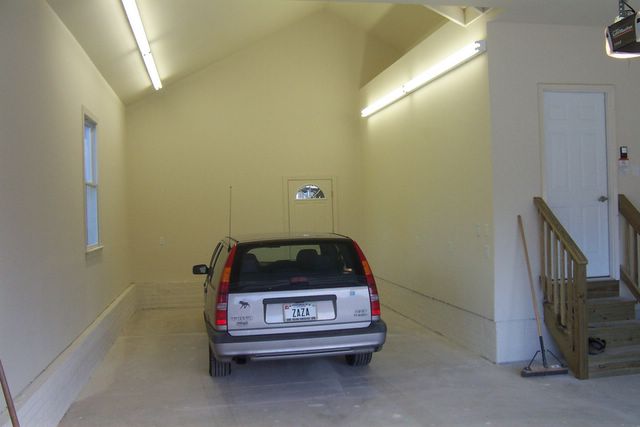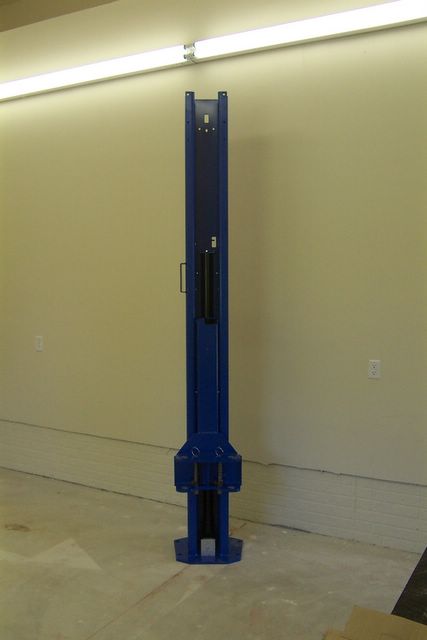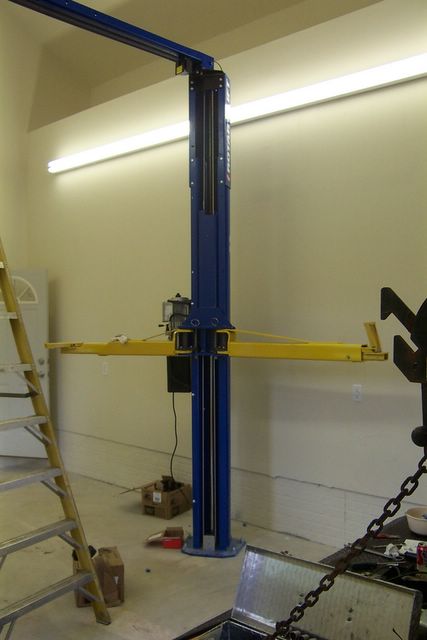Engine runs great now. I did not realize that the timing had to be set at 1400 rpm. Smooth idle now.
I also installed new stainless steel brake hoses from Ireland Engineering to solve what felt like binding as I pulled away from stop signs.
Author Archives: gdonarum
August 2006
We cleaned up the transmission and found that it was "sealed" with silicon. It must have been taken apart at some point. After talking with local 2002'ers Tim and Casey and local shop owner Mark Raspi, I decided to just try to seal it up again with silicon and save money for a 5 speed conversion. I rebuilt the shifter and reconnected it to the trans. We inspected the clutch and reinstalled it without modification. A new guibo and bolts and a new trans mount completed the installation. After the car sat overnight, another fluid puddle soaked the cardboard under the car. One of the bolts needed a better coating of silicon. It has been leak free ever since. Since reinstalling the trans I have put about 20 miles on it and second gear is not good at all. I have to hold it in. I have to decide whether to fix it, get another four speed, or bite the bullet and find a 5 speed.
During the first couple trips in the car, the temp gauge kept inching its way to the red. It turns out that the water level was low. That was a simple fix. There's definitely a ground problem too since the temp jumps when the blinkers are on.
Most of the light bulbs were shot or missing so I bought everything except the headlights. I took apart the tail lights and gave them a light coat of chrome paint. The reflectors were basically black. Since the lenses are cracked I will probably get new assemblies at some point.

So now it's a driver. I've driven it to work, but it's quite an adventure. The car sputters like crazy and really smells. I should probably replace the distributor cap and points and make sure I didn't crack one of the plugs when I installed them. The Weber seems to function great, except the idle at startup is too low. The brakes are functional but seem to exhibit the grabbing problem associated with old brake hoses. The shocks and struts are terrible, The steering floats a little at speed.
My goal is to do a rolling restoration, but it's tough when there are so many worn out system. It should be fairly simple to tune out the engine bugs, but that second gear problem really bumps the drive train up on the priority list.
July 2006
Installed new plug wires. The old ones were falling apart. Traced a few wires through the engine compartment to solve a gauge problem and to more permanently connect the coil.
The transmission shakes like crazy. It's a four speed…probably the original. The trans mount is completely split in half. The guibo is split into 3 pieces. The shift mount bracket is held together with a home made bracket and mismatched bolts. This car must have been off road at some point in it's life. It's time to rebuild this area. First we drained the transmission fluid. There was less than a cup of fluid in the case. That's probably not good. Only a few flakes of metal on the magnetic plug so hopefully it is fine. We started by taking apart the shift lever from inside the car. We removed the trans bolts that we could reach from the engine compartment. Then we got underneath. We unbolted the transmission mount bracket and guibo. We kept unbolting parts of the driveshaft until we could slide it out of the trans.
June 2006
The first goal is to get the car running so we can evaluate what the long term plan should be. I pulled off the wheels and had the old tires removed. I cleaned the wheels up and repainted them silver. We put a set of Pep Boy's basic 185/70-13s on for now. I still need to polish the trim rings and center caps. The engine compartment got a battery, coil, spark plugs, and new oil and filter. We siphoned out the old gas and poured in a few gallons of new stuff. A few sprays of carb cleaner caused the car to come to life for a second, but it obviously wasn't running on gasoline. We took and Weber off and pulled it apart. The gas had turned to jelly because the car sat in the desert for a few years. The floats were stuck to the bottom of the bowl and the jets were completely clogged. A can of carb cleaner and a rebuild kit solved the problem. The engine fired right up and idled. It sounds great. We only ran it for a minute because of the coolant issue. The goose neck on top of the engine has a hole in the casting. I'd love to know what caused that. A replacement is one the way and we can top off the coolant after it is installed.
May 2006
Our initial inspection of the car showed that it needed some love but there were a lot of pleasant surprises. The interior is in bad shape. The seats, carpet, door panels, and headliner will all have to come out. I would like to change everything over to black leather from a later model. The trim is mostly complete, but there are a couple pieces that are dented and would look terrible against a new paint job. The 4 speed has some sludge on the outside of the case and the shifter bracket is held on with wire. The brake system and suspension should live through a few miles before being rebuild during the winter. The windshield and one of the tail lights are cracked. On the bright side there is no body rot and only a few spots of surface rust. The engine has already been upgraded with a header and a Weber carb. I was pretty pleased.
The Lift is Installed
We designed the whole house around this one tool and now it's finally being installed. Well…OK…maybe not the whole house.
Before finalizing the design of our new garage, I talked to the guys at Kunkel Service in Abingdon, MD. We decided that Rotary's 10,000 lb two post lift was the way to go. The lift requires 12 feet of overhead clearance and an extra heavy duty concrete pad. The roof of the garage was designed with scissor trusses in the rear bay to provide the clearance. We also had the electricians run the proper power source to the ceiling of the bay and plenty of fluorescent light.

The entire lift was delivered on the back of a flatbed truck. An electric hydraulic pump provides power to the cylinders in each post.

Rick, the installer, measured the bay and laid down chalk lines for alignment. The first post went up with the help of the crane on the back of the truck. A little rocking back and forth and it was in the right place. Holes were drilled in the concrete to accept studs. Nuts were torqued down to lock the post in place.

After the second post is placed, the top bar is installed. The yellow lift arms are installed with pivot pins. Then the pump and plumbing are installed and bled.

The lifts fits perfectly into its bay. Plenty of head room and enough space to squeeze by on the sides.
